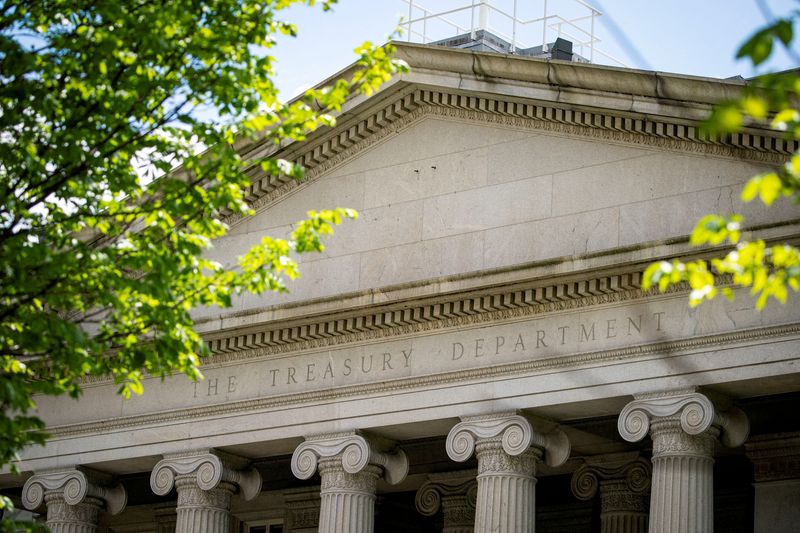
By Davide Barbuscia
NEW YORK (Reuters) – A measure of the borrowing costs on loans between banks and other participants in the U.S. repurchase agreement (repo) market hit its highest level since January on Monday, New York Federal Reserve data released on Tuesday showed.
The Secured Overnight Financing Rate (SOFR), a measure of the cost of borrowing cash overnight collateralized by Treasury securities, hit 5.4%, the highest since Jan. 2, in a sign of dwindling liquidity.
The jump from 5.33% at the end of last week follows heavy Treasury coupon debt supply, with the settlement of Treasury auctions straining banks’ balance sheets, analysts said.
“SOFR should normalize in the coming days, as the supply gets digested,” said Teresa Ho, head of U.S. short duration strategy at JPMorgan.
“However, it might take a little bit longer to normalize, not only because primary dealer inventories are already high, but also because it’s a holiday shortened week, providing less liquidity to the markets,” she said.
A spike in the price for repurchase agreements, or repos, can be a sign that cash is getting scarce in a key funding market for Wall Street. Short-term funding costs spiked in September 2019, forcing the Federal Reserve to intervene by injecting liquidity into repo markets.
“Everyone’s keeping a close eye on it because it is reminiscent of what happened in 2019,” said Gennadiy Goldberg, head of U.S. rates strategy at TD Securities USA.
The jump in funding rates roughly coincided with an increase in usage of the Federal Reserve Bank of New York’s reverse repo facility, through which money market funds lend to the Fed.
The facility last week saw $664.6 billion in inflows, the highest level since $680 billion on Jan. 10.
Such increases tend to happen around the end of the quarter as dealers offer less intermediation for regulatory reasons, prompting market participants to park their cash at the Fed.
“Around quarter end is when you typically have a pullback in balance sheet availability because a lot of the banks are looking to de-risk heading into quarter end,” said Goldberg.
“You’re starting to see more of an impact now that liquidity is not as ample as it used to be,” he said.
(Reporting by Davide Barbuscia; Editing by Chris Reese)
EMEA Tribune is not involved in this news article, it is taken from our partners and or from the News Agencies. Copyright and Credit go to the News Agencies, email news@emeatribune.com Follow our WhatsApp verified Channel





